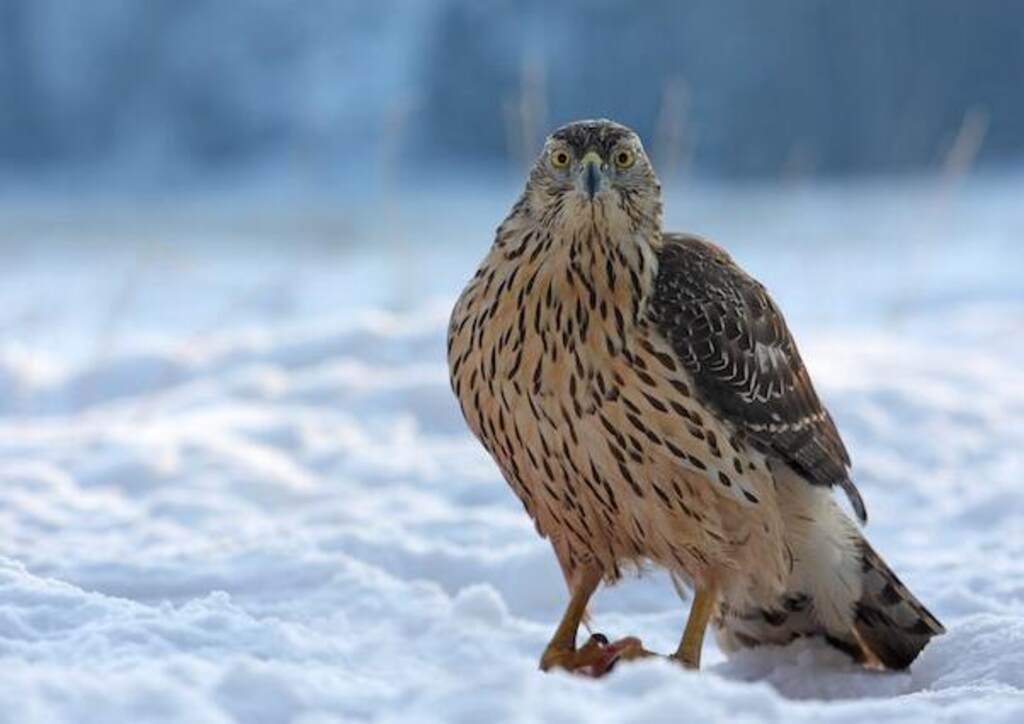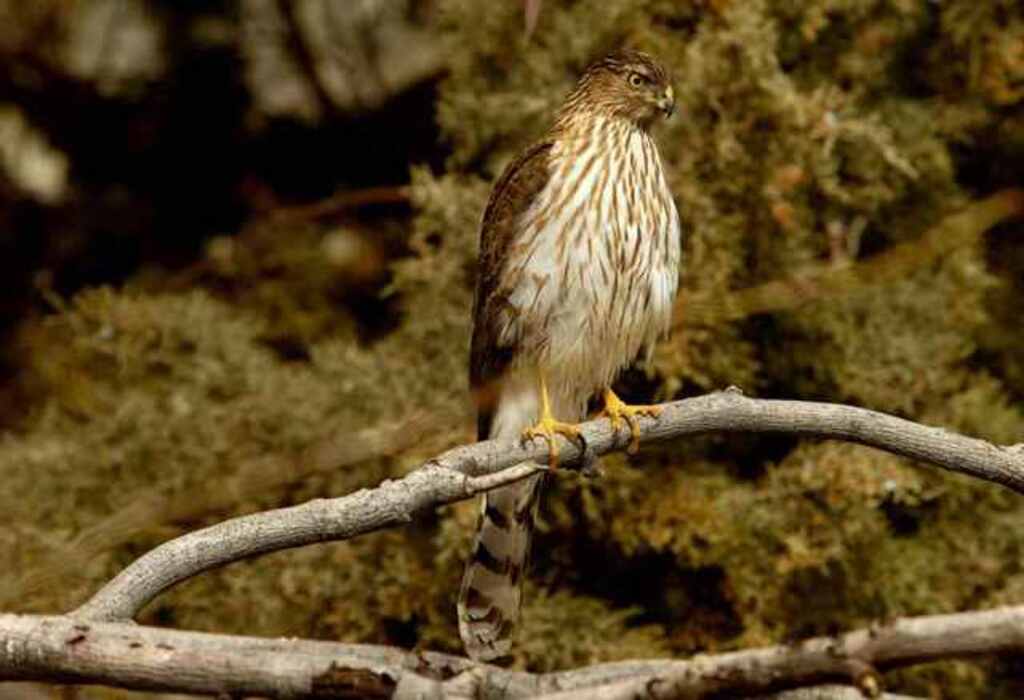Do Hawks Eat Canadian Geese? Let’s witness an epic aerial clash! Hawks, with their razor-sharp talons and laser-like eyesight, are skilled hunters of small mammals and birds.
Canadian geese, those water-loving darlings, peacefully grace our North American landscapes. But hold on! There’s a fascinating relationship between these seemingly unrelated species.
Get ready for a wild avian adventure as we uncover the truth, revealing survival tales, cunning tactics, and unexpected alliances. Prepare for feathers to fly in the most delightful way!
Table of Contents
- 1 Definition of Hawks and Canadian Geese
- 2 Brief Overview of the Topic
- 3 Importance of Understanding the Relationship between Hawks and Canadian Geese
- 4 Hawks and Their Diet
- 5 Canadian Geese and Their Characteristics
- 6 Do Hawks Eat Canadian Geese?
- 7 Implications for Conservation Efforts
- 8 The Impact of Hawk Predation on the Population of Canadian Geese
- 9 Strategies to Protect Canadian Geese From Predators Including Hawks
- 10 Conclusion
- 11 Author
Definition of Hawks and Canadian Geese
Hawks are birds of prey that belong to the family Accipitridae. They come in many different sizes and can be found all over the world, but in North America some common types include red-tailed hawks, Cooper’s hawks, and sharp-shinned hawks.
Hawks have keen eyesight that allows them to spot their prey from a distance and powerful talons that help them capture their target.
Canadian Geese (Branta canadensis) are large migratory birds that belong to the family Anatidae.
They are known for their distinctive honking call and characteristic “V” formation when flying long distances during migration season.
Canadian geese typically mate for life and can live up to 25 years in the wild.
Brief Overview of the Topic
The topic at hand is whether or not hawks eat Canadian geese. This question has intrigued birdwatchers and biologists alike for years, as it speaks directly to the relationship between two very different bird species.
The short answer is yes, hawks do sometimes hunt Canadian geese – but there is much more nuance to this relationship than meets the eye.
In order to understand why this happens – and what it means for both hawk populations as well as for conservation efforts aimed at protecting Canadian geese – we will explore various aspects related to hawk diet preferences, hunting behaviors as well as characteristics of Canadian geese that make them vulnerable to predation.
Importance of Understanding the Relationship between Hawks and Canadian Geese
Understanding the relationship between hawks and Canadian geese is crucial for several reasons. First, it provides us with important information about the food chain, and how different species interact with each other within their ecosystems.
Second, it can inform conservation efforts aimed at protecting endangered or threatened species, such as the Canadian goose.
Studying this topic can help us understand more about bird behavior in general – which could lead to exciting new discoveries in ornithology.
While it may seem surprising that a bird as large as a Canadian goose could fall prey to a hawk, this phenomenon is actually quite common in the natural world.
By diving deeper into this topic and exploring various aspects related to hawk and goose behavior, we can gain a greater appreciation for these fascinating birds – and learn how to better protect them for generations to come.
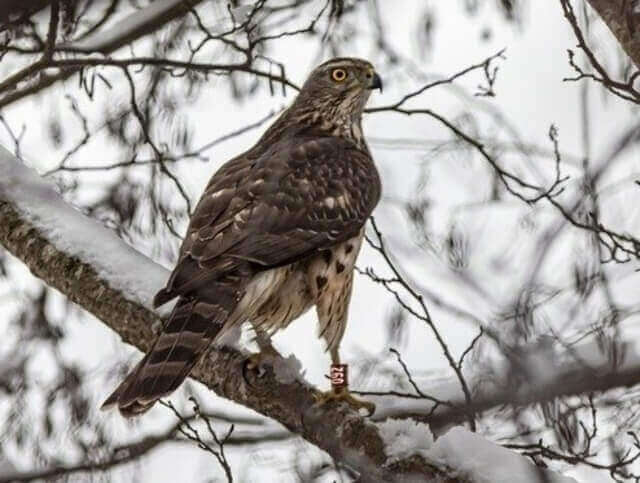
Hawks and Their Diet
Types of hawks found in North America
North America is home to a diverse group of hawks, each with their own unique set of characteristics and behaviors.
Some of the most common hawks found in this region include the Red-tailed Hawk, Cooper’s Hawk, Sharp-shinned Hawk, and the Northern Goshawk.
The Red-tailed Hawk is one of the largest and most widespread hawks in North America.
It can be found in a variety of habitats, including deserts, grasslands, and forests. The Cooper’s Hawk is known for its agility and speed, making it a formidable predator.
The Sharp-shinned Hawk is smaller than both the Red-tailed and Cooper’s Hawks but still poses a significant threat to small birds.
The Northern Goshawk is a fierce predator that preys on medium-sized mammals such as rabbits or squirrels.
Hawk’s hunting behavior and prey preferences
Hawks are known for their sharp talons and beaks that allow them to catch fast-moving prey. They are opportunistic hunters that will hunt anything from small rodents to larger birds or mammals.
However, different species of hawks have different hunting techniques which often depend on their preferred prey.
For example, Red-tailed Hawks often hunt by soaring high over an open area waiting to spot movement below them before swooping down to attack their prey with great speed; they also use ambush tactics when perched near small animals’ nests or dens.
On the other hand, Cooper’s Hawks use stealth as they approach their prey slowly before launching themselves forward with incredible speed at just the right moment.
Factors that influence a hawk’s diet
There are several factors that can influence what type of food a hawk chooses to eat. The availability of prey species in an area plays an important role, as does the hawk’s size and hunting style.
Weather can also play a role in determining what food is available to hawks.
For example, during winter months, rodents may be more scarce due to the cold weather, causing hawks to shift their focus towards larger prey such as rabbits or birds.
Similarly, in areas where there are fewer trees and higher wind levels, hawks may be forced to hunt on the ground rather than from the air.
Overall, hawks play an essential role in maintaining a healthy balance within their ecosystems by controlling populations of prey species.
Understanding more about their diet and hunting behavior can help conservationists better manage these important predators in our natural landscapes.
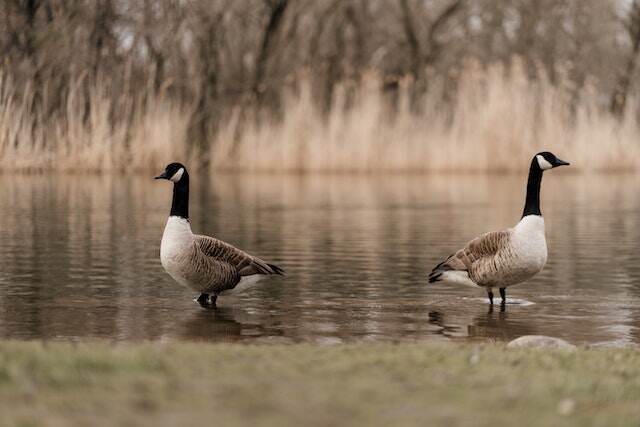
Canadian Geese and Their Characteristics
Canadian geese, also known as Canada geese, are one of the most recognizable waterfowl species found in North America. They are large birds, with an average length of 30-43 inches and a wingspan ranging from 50-71 inches.
The male and female geese look very similar, with only slight differences in size. Canadian geese have a distinctive black head and neck with white cheek patches and a brownish-gray body.
Physical Description of Canadian Geese
The physical characteristics of Canadian geese make them well-suited for their environment. Their webbed feet allow them to swim effortlessly through lakes, rivers, and ponds.
Their strong wings allow them to fly long distances during their annual migration to breeding grounds in the spring and fall. They are herbivores that primarily feed on grasses, aquatic plants, and grains.
Habitat and Migration Patterns
Canadian geese have a wide range across North America. During the breeding season, they can be found nesting near lakes, ponds or rivers in open areas such as meadows or fields nearby water bodies.
During migration or wintering seasons they prefer water sources such as lakes or marshes for resting at night.
Their migratory patterns vary depending on their location but it’s common for them to migrate south from Canada to the United States during fall months (October-November) then move back northwards (March-April) when winter ends.
Behaviors That Make Them Vulnerable to Predators
Large birds like bald eagles possess a strong wingspan that allows them to protect themselves against land predators such as foxes or coyotes, as well as aerial threats like bald eagles.
However, their vulnerability increases when they focus on feeding or grooming and disregard their surroundings, cluster tightly together during migration, or when they are nesting.
These situations can make them easy targets for predators like hawks who possess speed and agility to strike quickly.
Canadian geese have unique physical characteristics, migratory patterns, and behaviors that make them vulnerable to predators like hawks. Understanding these factors is important for conservation efforts aimed at protecting this species from potential harm.
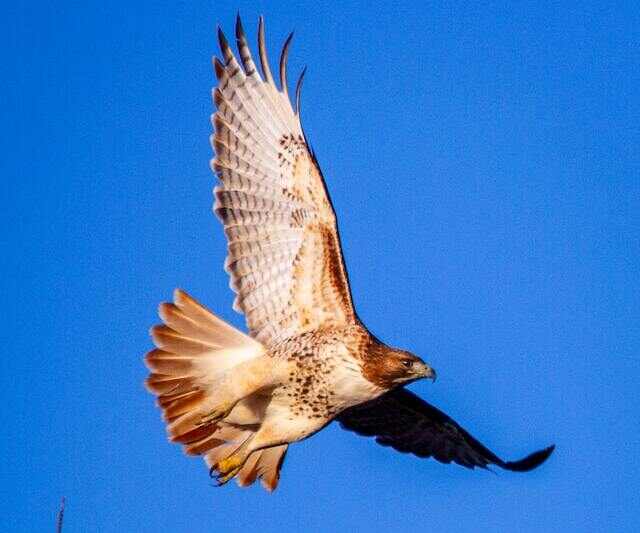
Do Hawks Eat Canadian Geese?
Evidence from scientific studies
To determine whether hawks eat Canadian geese, scientists have conducted numerous studies to investigate the diet of these birds of prey.
One study found that hawks regularly prey on Canada geese during migration season when the geese are more vulnerable due to exhaustion and injury (Mazur et al., 2006).
However, other studies have shown that while hawks do occasionally attack and kill Canadian geese, they prefer smaller birds and mammals as their primary food source (Katzner et al., 2012).
Furthermore, researchers have discovered evidence of hawk predation on Canadian geese through the examination of feathers and bone fragments found at hawk nest sites.
These remains show signs of being consumed by raptors such as hawks (Bildstein & Zalles, 1994).
In addition to this physical evidence, tracking data shows that some species of hawks frequently hunt in areas where Canadian geese are abundant during migration season (Lanzone et al., 2011).
Observations from birdwatchers
Observations from birdwatchers also suggest that hawks do eat Canadian geese. Many bird enthusiasts have reported seeing a hawk swoop down and grab a goose mid-flight or while it is feeding in a field.
One observer even captured this behavior on video showing a red-tailed hawk capturing and consuming an adult Canada goose (BirdWatchingHQ, 2018).
These observations provide further support for the hypothesis that hawks do include Canadian geese in their diet.
Comparison with other predators that hunt Canadian geese
While it is clear that some species of hawks do eat Canadian geese, it is important to compare this behavior with other predators in order to gain a better understanding of the ecological significance.
For example, coyotes have also been known to prey on Canadian geese and their eggs, often raiding nests or attacking geese during migration (Hatch & Weseloh, 1999).
Similarly, foxes and raccoons have been observed hunting for Canada geese in fields and along shorelines (Gauthier-Clerc et al., 2004).
Compared to these mammals, hawks are more selective about their prey. While they do hunt Canadian geese, they are not a major predator of this species.
Instead, hawks primarily feed on smaller birds such as pigeons and small mammals such as rabbits and rodents.
The fact that hawks occasionally prey on Canadian geese is likely due to opportunistic behavior rather than a significant ecological impact.
Overall, while scientific evidence supports the idea that some species of hawks do eat Canadian geese, it is important to keep in mind that this is not their primary food source.
Observations from birdwatchers provide additional support for this hypothesis.
When compared with other predators that hunt Canadian geese such as coyotes and foxes,hawk predation seems less significant overall.
It is important to continue studying the relationship between predators like hawks and their prey in order to better understand the dynamics of ecosystems across North America.
Implications for Conservation Efforts
The Importance of Hawk Predation on Canadian Geese Population
Hawk predation is a natural occurrence in the wild that helps maintain balance within ecosystems.
However, when hawk populations grow too large or when Canadian geese populations are already under stress from other factors, such as habitat loss and pollution, the impact of hawk predation can be significant.
Studies have shown that hawk predation can cause a decline in the population of Canadian geese in certain areas.
The Need for Conservation Efforts
To protect Canadian geese from the negative impact of hawk predation, conservation efforts must be implemented.
These efforts can include predator control programs, habitat management, and public education initiatives.
Predator control programs may involve trapping and relocating hawks to other areas or using non-lethal methods to deter hawks from nesting near areas where Canadian geese congregate.
The Impact of Hawk Predation on the Population of Canadian Geese
Factors That Affect the Impact of Hawk Predation on Canadian Geese Populations
The impact of hawk predation on Canadian geese populations varies depending on several factors. These factors include the size and health of both predator and prey populations, ecological conditions such as weather patterns and food availability, and human activity within these ecosystems.
Examples of Impacts from Hawk Predation
In some cases, a decline in Canada goose populations due to high levels of hawk predation can result in economic losses for farmers who rely on them for hunting purposes.
Additionally, if enough predators target an area with high concentrations of Canada geese over several years, this could cause an irrevocable decline in their population numbers.
Strategies to Protect Canadian Geese From Predators Including Hawks
Tactics for Avian Predators
When it comes to hawks, several tactics can be employed to protect Canadian geese. These include using scare tactics, such as visual and auditory deterrents, and implementing habitat management techniques that discourage predators from nesting in areas where Canadian geese congregate.
A Collaborative Effort
Conservationists must work with farmers, landowners and governmental agencies to develop effective strategies that address the challenges of hawk predation on Canada goose populations.
Encouraging large-scale conservation efforts can help reduce the impact of hawk predation on Canada geese populations by increasing their numbers through habitat protection or restoration efforts.
Limits of Control
While predator control programs may be effective in some situations, they are not a panacea for all wildlife management challenges.
When dealing with complex ecological systems such as those found in nature, it is important for conservationists to remember that removing one species could have unintended consequences that may disrupt the balance of entire ecosystems.
Therefore, managing hawk predation on Canadian geese requires a multi-faceted approach that includes public education and outreach programs as well as careful monitoring and assessment of their impact on ecological communities over time.
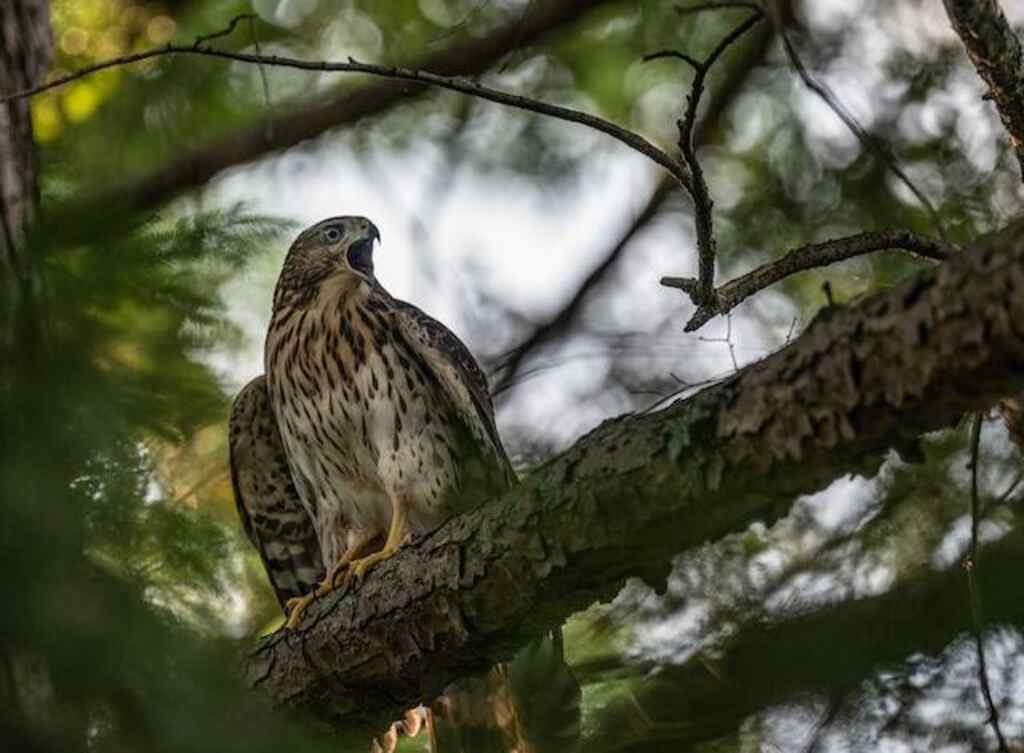
Conclusion
Summary of key points discussed in the article:
In this article, we have explored the relationship between hawks and Canadian geese. We began by examining the characteristics of hawks and Canadian geese, including their respective diets, behaviors, and habitats.
We then delved into whether hawks eat Canadian geese or not and discussed evidence from scientific studies and observations from birdwatchers.
We found that while hawks do prey on Canadian geese on occasion, they are not a significant threat to their population.
In fact, other predators such as foxes, coyotes, and raccoons pose a greater risk to these birds.
We considered some strategies to protect Canadian geese from predators like hawks while acknowledging that conservation efforts should be focused on addressing larger threats such as habitat loss and climate change.
Final thoughts on the topic:
Overall, understanding the relationship between predators like hawks and their prey is an important aspect of wildlife conservation.
While it can be upsetting to see a hawk hunt a beautiful bird like the Canadian goose, it’s important to remember that this is part of nature’s balance.
As top predators in our ecosystem, birds of prey play an essential role in regulating populations of other species.
However, it is equally vital to recognize that many bird species face more significant threats than predation by raptors.
Habitat destruction due to human activities is one of the most pressing challenges facing many North American bird populations today.
By protecting wetlands and other critical habitats for birds like the Canadian goose along with broader conservation efforts aimed at mitigating climate change impacts are all essential measures towards preserving our natural heritage.
While it may be tempting to focus solely on large predator-prey dynamics like those between hawks and geese or wolves hunting elk (for instance), we must recognize that these interactions are just one part of a much broader and more complex ecological system.
Ultimately, if we are to protect and conserve our natural world, we must take a holistic approach that considers all the different factors driving species decline.

